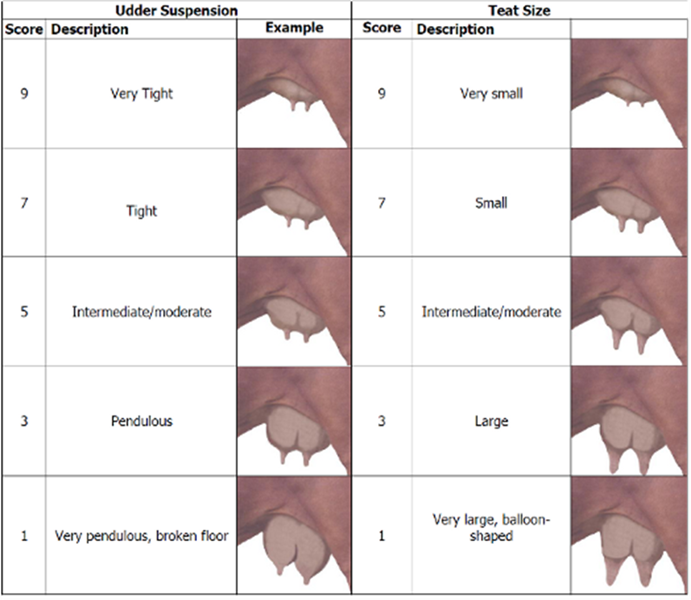Evaluate Your Beef Cow’s Udder Health

How do your cows' udders look?
By: Steve Huntzicker, University of Wisconsin Extension
As we begin thinking about weaning calves and deciding which cows might need culling, udder quality and condition are one factor that should be taken in to consideration.
There are many factors to consider when evaluating the overall health and longevity of beef brood cows. Udder health is no exception. It is important to identify which cows may be having or had udder problems and need to be culled. Frequent monitoring of the herd can help identify problems early and allow time for eliminating potential profit loss.
The condition of the cow’s udder can have a major impact on the overall performance of the calf. Not only is milk production key, but poor physical structure of the udder can make it a challenge for the young calf to get access to the milk it needs. This can lead to decreased calf growth even if the cow is producing an adequate milk supply. Many udder suspension and teat size scoring systems for the beef industry use scores of 1 (not desirable) to 9 (desirable) to evaluate overall udder health. This chart is an example from the Red Angus Association of America. Udder scores taken closer to calving (within 24-48 hours) will give the most accurate assessment. Spring or summer assessments will provide better information about overall udder health than fall when the cow may be producing little to no milk, but fall assessments can still be helpful for determining who stays and who goes.
So what should producers be looking for? Research has shown that teats that are smaller (small to moderate) in circumference and short to medium length are preferred over larger circumference and long teats. Udder suspension is important as well. Well attached udders (tight to moderate) are less susceptible to injury and contamination from mud and manure. Ideally the cow would have udder scores in the middle of this range for both udder suspension and teat length.
While many producers use this information for culling decisions, udder health can be used as selection criteria. Heifers from cows that have strong udder qualities have a moderate chance of having inherited those same traits. Producers have this data available as well for sires that produce daughters with good udders. Due to the heritability of these traits it is recommended to score the entire herd and use that information in future selection decision.
Udder health is just one of many factors producers should consider when making management decision for their beef cow herd. However, it is one that certainly should not be overlooked. Improving udder quality can have a beneficial impact on getting calves off to a good start and improving your overall efficiency. Monitoring for good udder quality can help producers reduce cost and increase profitability, a goal that all producers want to achieve.







